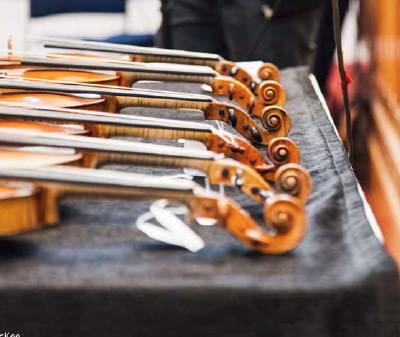Notable Sales: Bernhard Simon Fendt I
Bernhard Simon Fendt was the first member of his prolific and influential family to become established in London. He was born in Füssen in southern Germany in 1769 and worked with his uncle François Fent in Paris between 1783 and 1796. In 1798 he moved to London to join the workshop of Thomas Dodd, working with John Frederick Lott (I). In 1809 Dodd moved his premises, and Fendt joined the shop of John Betts in the Royal Exchange. Betts was the most significant figure in the London violin trade at that time and Fendt made many very fine instruments for him, bringing a much more sophisticated approach than had previously existed in England. He fell out with Betts in 1825 and subsequently worked in partnership with Betts’ nephew Charles Vernon. Very little of his work carries his own label, but his violins, violas and cellos, with the labels of the various businessmen he served, are amongst the finest made in London in this period.
(b Füssen, 1769; d London, 1826)
Bernhard Simon Fendt was the first member of his prolific and influential family to become established in London. He was born in Füssen in southern Germany in 1769 and worked with his uncle François Fent in Paris between 1783 and 1796. In 1798 he moved to London to join the workshop of Thomas Dodd, working with John Frederick Lott (I). In 1809 Dodd moved his premises, and Fendt joined the shop of John Betts in the Royal Exchange. Betts was the most significant figure in the London violin trade at that time and Fendt made many very fine instruments for... Read more
02 August 2023 - Dilworth, John
In our final article on the subject of English cellos, John Dilworth examines a superbly preserved cello by Bernard Simon Fendt Sr.
We offer buyers and sellers a bespoke private sale service, sourcing exceptional instruments and bows and matching them with the most discerning buyers.
More InformationTim Ingles and Paul Hayday will offer an initial evaluation of the authenticity and value of your instrument or bow to recommend an auction estimate and reserve price.
Enquire
Tim Ingles and Paul Hayday will offer an initial evaluation of the authenticity and value of your instrument or bow. At this stage, the assessment is free and without obligation. In the first instance, we suggest submitting good-quality images to us, preferably by email to info@ingleshayday.com or by completing the valuation form.
Read more